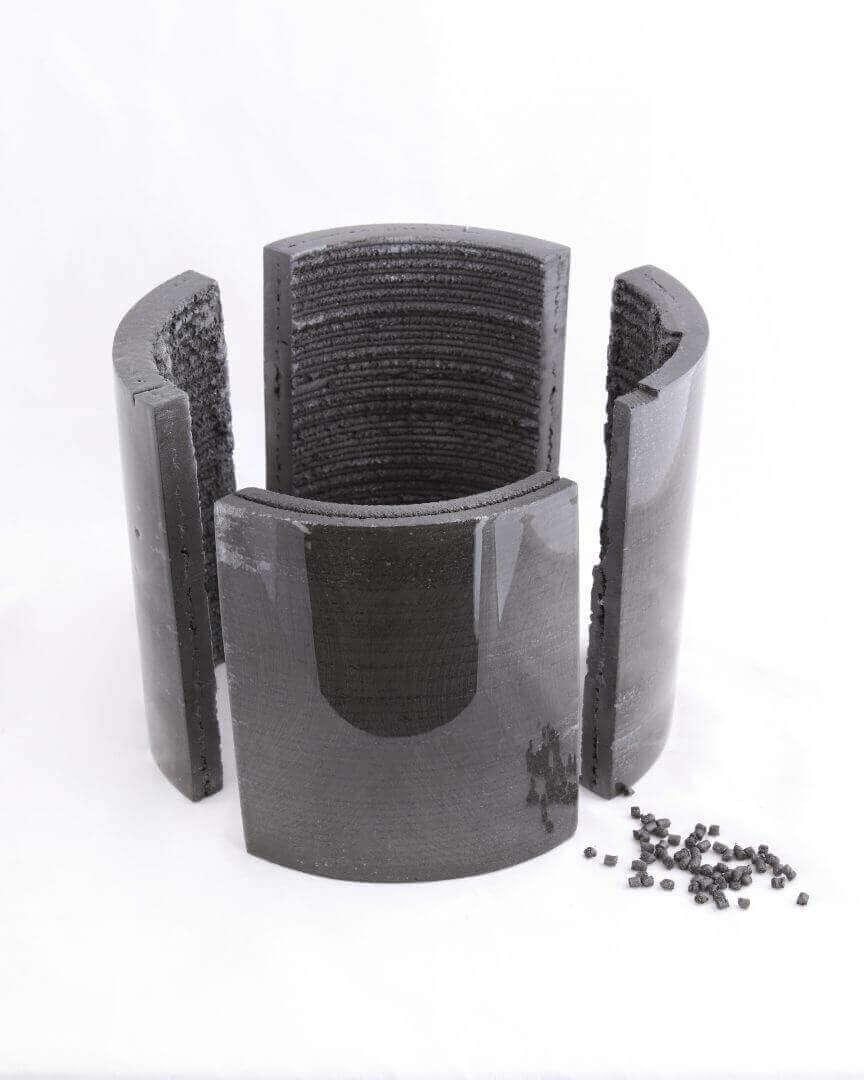Researchers suggest that 3D printed magnets perform just as well or even better than magnets made using traditional methods.
Being able to control magnets sounds like some sort of superhero power (remember Magneto?). But, researchers at the Department of Energy’s Oak Ridge National Laboratory have been using 3D printing to create any magnet they want.
At the laboratory, researchers applied 3D printing instead of the injection molding method that is typically used to make magnets. Then, they tested the printed magnets and compared the results.
Impressively, the data showed that the 3D printed magnets were just as magnetic, sometimes even stronger, and as structurally sound as the injection molded options.
By using a 3D printer, researchers found they could more easily control the magnetic field while also conserving energy and materials. Even better, they realized they had the flexibility to finally create shapes and designs that had previously been impossible.
ORNL researcher Ling Li said: “Manufacturing is changing rapidly, and a customer may need 50 different designs for the magnets they want to use.”
Watch the video below to see Parans Paranthaman from the Critical Materials Institute explain the process.
What Makes 3D Printed Magnets A Better Choice?
So why is 3D printing better for making magnets? Magnets are usually made from rare earth materials that require environmentally destructive mining. A 3D printer is more eco- friendly because the material can be created in a lab.
The process uses a technology called additive manufacturing. First, researchers use melted pellets made from Nylon-12 or isotropic NdFeB powder and polyamide.
Then, they print the bonded magnet similar to how your printer works at home – by building up layers.
Before, scientists had to magnetize the 3D prints after production in a separate process. Now, researchers at ORNL can produce magnets using permanently magnetized materials.
Researchers claim that this method uses 30 to 50 percent less material compared to traditional methods. Plus, the benefit of 3D printing a magnet is that you can design the shape and structure, which allows for even magnetic fields instead of uneven sides.
This opens up many possibilities for using the magnet for different purposes and industries.
“This work has demonstrated the potential of additive manufacturing to be applied to the fabrication of a wide range of magnetic materials and assemblies,” explains researcher and co-author John Ormerod.
“Magnet Applications and many of our customers are excited to explore the commercial impact of this technology in the near future,” Omerod says.
The benefits are that small batch production becomes possible with a streamlined process to meet specific customer demands. The 3D printed magnets are also able to perform in a similarly strong and controlled way.
Read the detailed report here in Scientific Reports. This new development is only the beginning. Now, researchers can start to experiment and apply these versatile 3D printed magnets and their wide range of uses.
There’s also a research team in Vienna 3D printing magnets (All3DP reported).
Source: Oak Ridge National Laboratory

License: The text of "New 3D Printed Magnets Outperform Traditional Versions" by All3DP is licensed under a Creative Commons Attribution 4.0 International License.